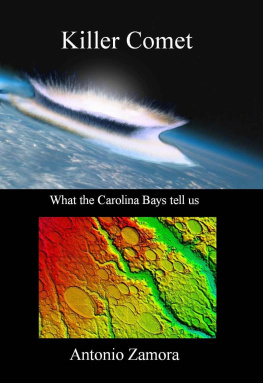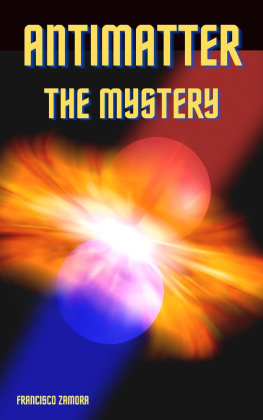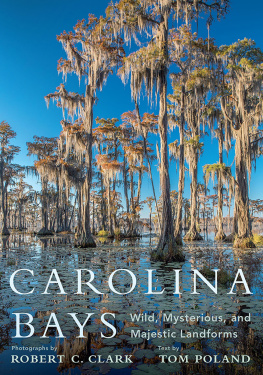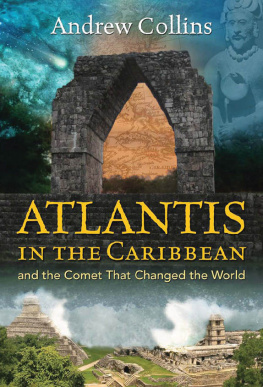Antonio Zamora - Killer Comet: What the Carolina Bays tell us
Here you can read online Antonio Zamora - Killer Comet: What the Carolina Bays tell us full text of the book (entire story) in english for free. Download pdf and epub, get meaning, cover and reviews about this ebook. year: 2013, publisher: ScientificPsychic.com, genre: Art. Description of the work, (preface) as well as reviews are available. Best literature library LitArk.com created for fans of good reading and offers a wide selection of genres:
Romance novel
Science fiction
Adventure
Detective
Science
History
Home and family
Prose
Art
Politics
Computer
Non-fiction
Religion
Business
Children
Humor
Choose a favorite category and find really read worthwhile books. Enjoy immersion in the world of imagination, feel the emotions of the characters or learn something new for yourself, make an fascinating discovery.
- Book:Killer Comet: What the Carolina Bays tell us
- Author:
- Publisher:ScientificPsychic.com
- Genre:
- Year:2013
- Rating:4 / 5
- Favourites:Add to favourites
- Your mark:
- 80
- 1
- 2
- 3
- 4
- 5
Killer Comet: What the Carolina Bays tell us: summary, description and annotation
We offer to read an annotation, description, summary or preface (depends on what the author of the book "Killer Comet: What the Carolina Bays tell us" wrote himself). If you haven't found the necessary information about the book — write in the comments, we will try to find it.
Killer Comet: What the Carolina Bays tell us — read online for free the complete book (whole text) full work
Below is the text of the book, divided by pages. System saving the place of the last page read, allows you to conveniently read the book "Killer Comet: What the Carolina Bays tell us" online for free, without having to search again every time where you left off. Put a bookmark, and you can go to the page where you finished reading at any time.
Font size:
Interval:
Bookmark:
All rights reserved
This work tries to reconstruct what happened at the end of the last ice age when a land bridge joined Asia and America allowing humans to migrate. Did the humans kill the megafauna that populated the continent, or was their disappearance the result of a natural catastrophe?
Kindle edition 3
During the Last Glacial Maximum, about 22,000 years ago, Canada and the northern United States were covered with ice sheets up to two kilometers thick. The Laurentide ice sheet extended approximately from the Rocky Mountains to the Atlantic Ocean, and the Cordilleran ice sheet covered the westward side of the mountain range all the way to the Pacific Ocean. With so much of the worlds water stored as ice over the Earths crust, the sea level was lower than today, and a land bridge called Beringia joined Siberia and Alaska. Toward the end of the ice age, 15,000 years ago, a corridor opened across Canada between the ice sheets that allowed animals and humans to migrate from Siberia to America. Many anthropologists have suggested that some the first human settlers of America came across this corridor and this is why Native Americans have many Asian genetic markers (Dulik, 2012).
When humans arrived during the ice age, North America already was inhabited by large animals or megafauna that included giant sloths, short-faced bears, American lions, saber-toothed tigers, camels, mammoths and mastodons. All the big animals became extinct around the time when humans populated America. The expansion of humans into previously unpopulated regions, such as Australia, has been generally accompanied by extinctions of other species (Burney, 2005). Some paleontologists have proposed that humans, acting as superpredators killed key species and modified the environment by the use of fire, thereby causing the demise of the megafauna. As evidence of this, they point out the distinctive fluted stone arrowheads crafted by the Clovis people that have been found at many archeological sites containing bones of big game scratched by butchering, including mastodons, mammoths, camels, horses and giant tortoises.
Not all scientists attribute the extinction of the megafauna to overhunting and loss of habitat caused by human settlement in North America. Other possible causes of the extinctions could have been the spread of infectious diseases brought by the new immigrants and large changes in climate patterns. There is not much evidence to support a wide extinction due to infectious diseases that could have affected multiple species with different immune systems. The extinction of the megafauna coincided with the onset of the Younger Dryas cold event, which was a period of sudden cold climatic conditions starting approximately 12,900 years ago and lasting 1,300 years. It is not clear why species that had endured the temperatures of the Last Glacial Maximum would not have adapted to the new conditions.
Paleontologists discuss primarily overhunting and climate change as the main reasons for the megafauna extinction, but they favor climate change as the dominant driver of most biotic phenomena. However, some scientists are considering that an impact from an asteroid or comet, smaller than the one that killed the dinosaurs, could have killed the North American megafauna and the Clovis people.
Richard B. Firestone of the Lawrence Berkeley National Laboratory and some of his collaborators proposed in 2007 the hypothesis that the explosion of an extraterrestrial object over the ice sheets of Canada around 12,900 years ago caused the megafaunal extinction and triggered the Younger Dryas cold event. This hypothesis, called the Younger Dryas Impact Hypothesis, has been the subject of contentious debate because the site of the putative explosion has not been found, and spikes in the concentration of rare elements from a meteorite, such as iridium, have not been found in the layer of soil associated with the extinction, as was the case with the impact that killed the dinosaurs.
Proponents of the impact hypothesis argue that an airburst or an impact on the thick glaciers would have shielded the Earth's surface to prevent the formation of a crater and that erosion by the water from the melting glaciers could have easily concealed the location of the impact zone. Firestone's evidence for an extraterrestrial impact consists of microscopic hexagonal diamonds that can only be created at great pressures and microscopic spherules of organic and inorganic matter that may have originated from the extraterrestrial collision and forest fires ignited by the heat of the impact. The elliptical Carolina Bays, which also have been suggested as being the result of the proposed extraterrestrial impact, do not contain meteorite fragments or any of the characteristics associated with extraterrestrial impacts, such as quartz crystals deformed by the high pressures of an impact, although microspherules attributed to the impact have been found within them. Opponents of the Younger Dryas Impact Hypothesis, which include many extraterrestrial impact experts, have not accepted the nanodiamonds and microspherules as evidence of a cosmic impact. In addition, soil samples from the terrain in which the Carolina Bays are found have produced a wide range of ages, and this has caused geologists to discard an impact hypothesis and to consider only that the Carolina Bays were formed over thousands of years by water or wind geomorphic processes.
The Younger Dryas Impact Hypothesis is appealing because it provides a neat explanation of several events that happened approximately at the same time: 1) the extinction of the megafauna, 2) the disappearance of the Clovis culture from the fossil record, and 3) the onset of the Younger Dryas cold event. Unfortunately, the evidence submitted thus far in support of this hypothesis has not been sufficient to satisfy the critics who demand unambiguous scientific proof.
The impact origin of the Carolina Bays has been a contentious issue since their discovery in the 1930s. Given this prolonged controversy, any book trying to associate impacts to the megafauna extinction and the Younger Dryas event is likely to be received with great skepticism. Nevertheless, the premise of this book is that an extraterrestrial object, such as an asteroid or a comet, was responsible for the extinction of the megafauna.
The introduction of new human populations to North America and the elimination of large mammalian herbivores and destruction of their habitat are often called the "Pleistocene overkill" hypothesis. Paleontologists do not think that the coincidence of human migration and megafauna extinction presents a convincing case for attributing the large extinction event to human predation. The next chapters provide a brief background of what is known about the megafauna and the people who inhabited North America during the ice age.
This book introduces the Glacier Ice Impact Hypothesis, which describes a sequence of four mechanisms by which the Carolina Bays could have formed after an extraterrestrial impact on the ice sheet that covered North America. The mechanisms are ordinary geological processes, but they have not been considered in the particular sequence presented here. Photographs of experimental tests demonstrate that rigorous scientific principles underlie the new hypothesis. Information is presented about the characteristics of extraterrestrial impacts and about the Carolina Bays.
The calculations derived from the Glacier Ice Impact Hypothesis and the geographic distributions of the Carolina Bays provide information about the magnitude of the extraterrestrial impact and its effect on the glacier ice sheet. Understanding how the Carolina Bays formed helps to explain how the material ejected by an extraterrestrial impact could have led to the extinction of the megafauna and acted as a trigger for the Younger Dryas cooling event.
Font size:
Interval:
Bookmark:
Similar books «Killer Comet: What the Carolina Bays tell us»
Look at similar books to Killer Comet: What the Carolina Bays tell us. We have selected literature similar in name and meaning in the hope of providing readers with more options to find new, interesting, not yet read works.
Discussion, reviews of the book Killer Comet: What the Carolina Bays tell us and just readers' own opinions. Leave your comments, write what you think about the work, its meaning or the main characters. Specify what exactly you liked and what you didn't like, and why you think so.


![ZHyul Vern - Off on a Comet [Hector Servadac]](/uploads/posts/book/834994/thumbs/zhyul-vern-off-on-a-comet-hector-servadac.jpg)









